Here is the late, not-so lamented Triton 2000, an interesting though, apparently, costly experiment by Poseidon; and the only model of their second stages that had been discontinued. I found it interesting, at the turn of the century, with its compact, swiveling, omnidirectional design, and even managed to find OEM replacement parts, for years afterwards, in Europe -- and still know a number of divers, mostly from Germany and Japan, who use them on a regular basis.
There had been some curiosity just why the Triton failed, since its outwardly simple-looking, modular design was certainly not a bad thing, at least in theory -- but it finally did come down to the very high cost of manufacturing that "simplicity."
That, I could definitely understand, having had some molding and fabricating experience, in the past — especially considering the narrow tolerances of the Triton‘s tight, snap-together, interlocking pieces (see diagram); and that odd, silicone diaphragm (seen below) with its tiny (1.25 mm) Allen screw fitting and fiddly adjustment, was a clear departure and not something that could easily be duplicated or simply punched from thick rubber sheeting. Triton was certainly a far cry, in terms of its design, from the simpler, tubular-shaped construction of previous and subsequent regulators.
"The idea with Triton," said a Poseidon communique, at the time, "was to make a cost effective construction, made for high volume sales, aimed at the dive school and sports diving market. Every part in Triton is therefore made in polymers to get high volume benefits and to simplify production and service. One of the prime targets was to have the same or similar performance as previous models of Poseidon regulators . . .
"This sets high demands on ourselves, suppliers and material. Apparently too high. Very few of the parts we receive from suppliers make it trough our internal quality tests which includes optical control of every single part, manual adjustment of parts, tests in various simulators and finally a test dive with every single regulator.
"Triton is, with all the crafting involved, extremely expensive to produce. We have for many years now subsidized the cost for this crafting, by keeping a competitive price on Triton. This will now be changed.
"This decision [to eventually discontinue the model] gives us new possibilities. We can now use the resources we have used on Triton to speed up production capacity on other regulators. This is necessary looking at the positive results this year and our great expectations for next. We can also use product development resources on other things then trying to make production of Tritons cost effective . . ."
There had been some curiosity just why the Triton failed, since its outwardly simple-looking, modular design was certainly not a bad thing, at least in theory -- but it finally did come down to the very high cost of manufacturing that "simplicity."
That, I could definitely understand, having had some molding and fabricating experience, in the past — especially considering the narrow tolerances of the Triton‘s tight, snap-together, interlocking pieces (see diagram); and that odd, silicone diaphragm (seen below) with its tiny (1.25 mm) Allen screw fitting and fiddly adjustment, was a clear departure and not something that could easily be duplicated or simply punched from thick rubber sheeting. Triton was certainly a far cry, in terms of its design, from the simpler, tubular-shaped construction of previous and subsequent regulators.
"The idea with Triton," said a Poseidon communique, at the time, "was to make a cost effective construction, made for high volume sales, aimed at the dive school and sports diving market. Every part in Triton is therefore made in polymers to get high volume benefits and to simplify production and service. One of the prime targets was to have the same or similar performance as previous models of Poseidon regulators . . .
"This sets high demands on ourselves, suppliers and material. Apparently too high. Very few of the parts we receive from suppliers make it trough our internal quality tests which includes optical control of every single part, manual adjustment of parts, tests in various simulators and finally a test dive with every single regulator.
"Triton is, with all the crafting involved, extremely expensive to produce. We have for many years now subsidized the cost for this crafting, by keeping a competitive price on Triton. This will now be changed.
"This decision [to eventually discontinue the model] gives us new possibilities. We can now use the resources we have used on Triton to speed up production capacity on other regulators. This is necessary looking at the positive results this year and our great expectations for next. We can also use product development resources on other things then trying to make production of Tritons cost effective . . ."
Attachments
-
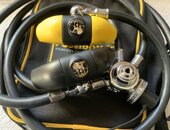 CC2BBDE2-E743-483C-ACF9-E948A3BF690D.jpeg111.7 KB · Views: 264
CC2BBDE2-E743-483C-ACF9-E948A3BF690D.jpeg111.7 KB · Views: 264 -
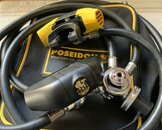 0426AF9D-7291-4E55-95F1-A81846105066.jpeg117 KB · Views: 234
0426AF9D-7291-4E55-95F1-A81846105066.jpeg117 KB · Views: 234 -
 A06DD7CB-AC50-42E3-B3D3-B91CF6AE1603.jpeg91.9 KB · Views: 212
A06DD7CB-AC50-42E3-B3D3-B91CF6AE1603.jpeg91.9 KB · Views: 212 -
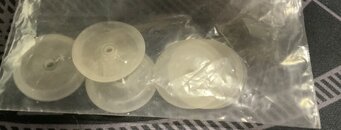 22F4209C-21CC-4404-B69F-A920D7191721.jpeg39.6 KB · Views: 190
22F4209C-21CC-4404-B69F-A920D7191721.jpeg39.6 KB · Views: 190 -
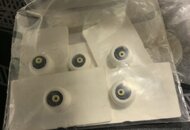 DAC32FAB-8CF8-42C8-ADC0-186B659FAFAF.jpeg48.1 KB · Views: 219
DAC32FAB-8CF8-42C8-ADC0-186B659FAFAF.jpeg48.1 KB · Views: 219 -
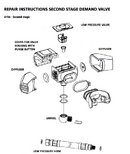 Screen Shot 2022-01-19 at 9.44.04 PM.png200.2 KB · Views: 212
Screen Shot 2022-01-19 at 9.44.04 PM.png200.2 KB · Views: 212




